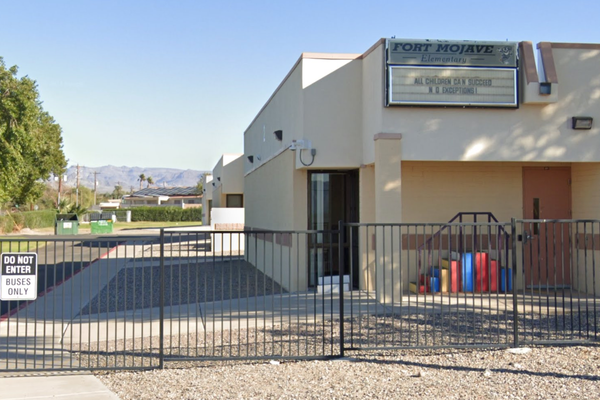
Al Capone’s historic waterfront mansion in Florida, where the notorious gangster took his last breath in 1947, has itself been whacked, and preservationists are pointing to the state’s Republican governor, Ron DeSantis, as the hitman.
The elegant century-old property on one of Miami’s most exclusive islands was quietly razed earlier this month. The take-down followed the enactment of a law from the DeSantis administration last summer stripping municipalities of their power to prevent the demolition of certain properties, regardless of historic designation.
The owners of the 1922 Mediterranean-style villa and guest house, which had nine bedrooms and once boasted the city’s largest private swimming pool, moved quickly to obtain a demolition permit, ending a years-long campaign to save the residence at which Capone is said to have plotted the St Valentine’s Day massacre.
Observers say the law poses an unprecedented threat to Miami’s historic neighborhoods and skyline, with wealthy landowners and developers “salivating” at the opportunity to wipe away unprotected older buildings of character and architectural significance for soulless modern “McMansions”.
“The new owner has come along, paid 15m plus, and decided not to dramatize this thing, just knock it down and present everyone a fait accompli,” said Paul George, the resident historian of the HistoryMiami museum.
“That’s essentially what happened here, it lost whatever protection it had. The ghost of Al Capone was vivid in Greater Miami all this time and with the demolition we lose a sense of place, we lose a picture and an idea of what things were like in a certain time, and we lose that idea of who lived there and how they lived.
“Now you’ve got a vacant lot, and it’s a lot harder to draw a mind picture of what went on there over the previous 100 years than it would be if the building was still standing.”
The property had a checkered recent past. It went through several owners and fell into disrepair by the early years of this century before its restoration to prohibition-era opulence in 2015.

Original features such as a striking all-black art deco bathroom were refurbished, along with additions made by Capone after he bought the house for $40,000 in 1928. Those additions included a two-story pool cabana and a gated sentry house from which armed guards would watch the road outside.
It last changed hands in 2021, bought for $15.5m by the Miami businessman Albert Claramonte and his wife Karise, who already owned the adjoining property on Palm Island. The couple’s reported original plan to level the Capone buildings and merge the two lots was stalled until the new law took effect.
Karise Claramonte hung up on a call from the Guardian. Toni Alum, a spokesperson for the family’s trust, told the Miami Herald in November that disclosing their vision for the 30,000 sq ft (0.7-acre) lot would “ruin the plans we are working on”.
Deirdre Marie Capone, the mobster’s great-niece and only living family member with memories of the “majestic” mansion, said she was saddened by its demise. She recalled her great-uncle living his final years there in seclusion and ill health between his 1939 release from Alcatraz after serving seven and a half years for tax evasion, and his death from a heart attack following a syphilis-induced stroke in January 1947.
“The whole family would come from Chicago and gather around my uncle every Christmas. I kind of grew up there, I learned to swim there, and I learned to ride a bike there,” the 83-year-old said.
“I have a lot of early memories of playing there and being in the pool with my dad and my uncle, it was an unbelievable piece of property. It was a symbol of what Miami Beach was back in the beginning, and when you were in the house you’d feel old Florida.
“I was happy when I saw the people of Miami Beach rallying and petitioning not to have it torn down, but money comes in and people want more. It’s sad because it’s going on so much around here, getting rid of the past for something bigger and more luxurious.”
DeSantis signed the law, formally the resiliency and safe structure act, in May of last year. With few exceptions, it removes the ability of municipalities anywhere in Florida to block the demolition of any coastal or flood zone structure deemed a hazard, or not up to code, even if it is recognized locally as historic.
Its sponsor, the Republican state senator Bryan Avila, insisted the law was needed to hasten the removal of dangerous or worn-out buildings at risk of collapse, and was not intended to smooth a path for greedy developers. “Ocean Drive is not going to get bulldozed,” he told legislative colleagues in April.
Critics, however, say the law opens up exactly that possibility and is another example of a DeSantis power grab. The governor has previously asserted control in areas under the purview of other entities, including higher education, the drawing up of voting maps, mandating that municipalities keep burning fossil fuels; plus oversight of Disney, Florida’s largest private employer.
In its analysis of the law, Florida Politics notes that numerous iconic buildings and neighborhoods in and around Miami are now without protection, including the Art Deco design district, the Versace mansion on South Beach and the Delano hotel.
“It’s government overreach, and it’s going to have a detrimental effect on the character of our city that we’re already seeing with the Capone house,” said Sarah Giller Nelson, chair of the Miami Beach design review board.
“People from all over the world come to Miami Beach to take in our historic buildings. Those who live in Miami Beach love it. Our unique, historic character is a huge economic driver and this law undermines that, so it makes no sense.”
Nelson continued: “Boards like the one I chair ensure the quality of design compatibility within the community, and the law completely does away with our authority and input. It’s deflating.”
George, the veteran historian, agreed. “We have all these great buildings and great neighborhoods in jeopardy,” he said. “The developers are salivating.”
This article was amended on 27 August 2023 to correct the date on which DeSantis signed the demolition law.







